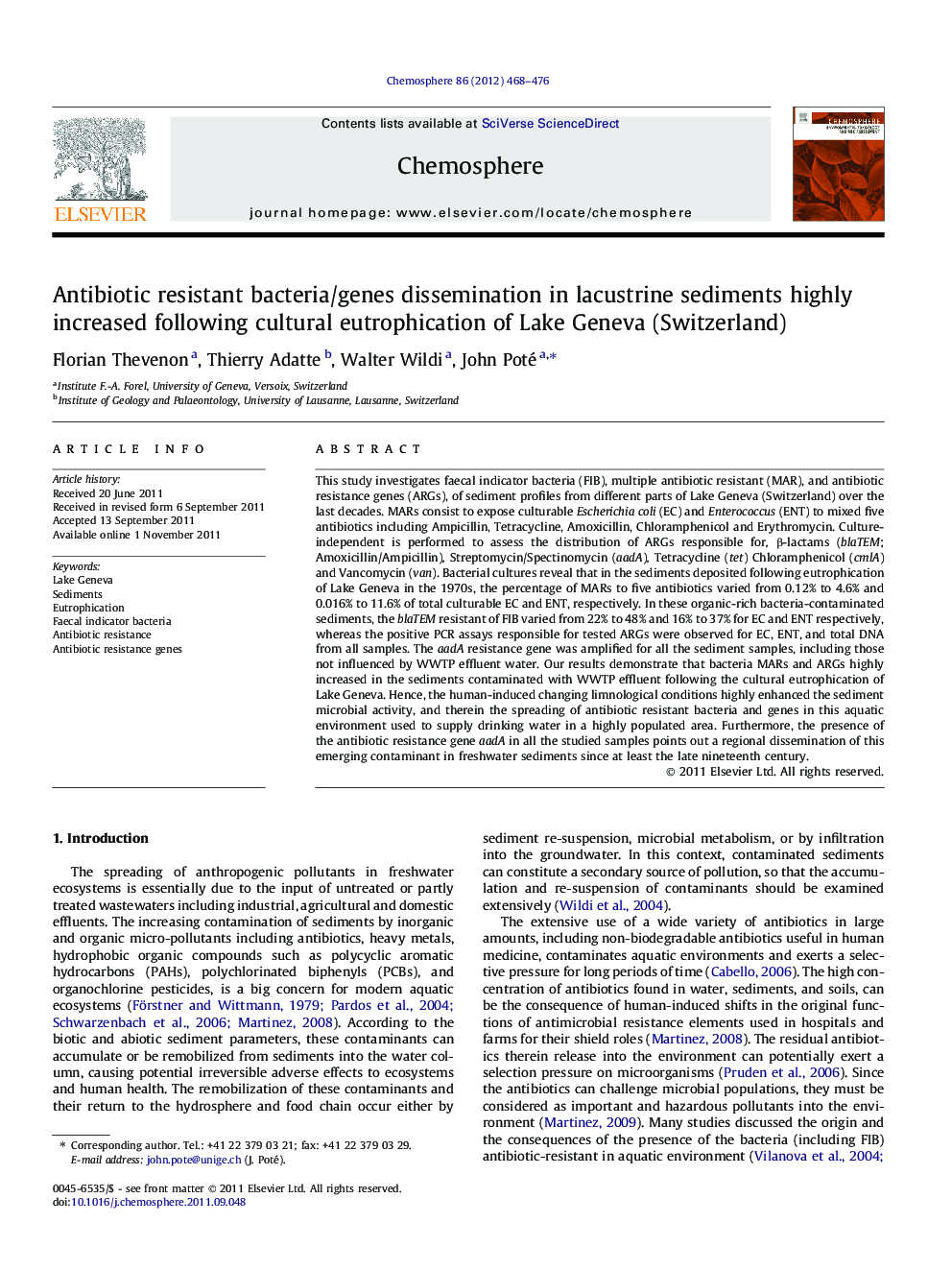| کد مقاله | کد نشریه | سال انتشار | مقاله انگلیسی | نسخه تمام متن |
|---|---|---|---|---|
| 4410506 | 1307549 | 2012 | 9 صفحه PDF | دانلود رایگان |

This study investigates faecal indicator bacteria (FIB), multiple antibiotic resistant (MAR), and antibiotic resistance genes (ARGs), of sediment profiles from different parts of Lake Geneva (Switzerland) over the last decades. MARs consist to expose culturable Escherichia coli (EC) and Enterococcus (ENT) to mixed five antibiotics including Ampicillin, Tetracycline, Amoxicillin, Chloramphenicol and Erythromycin. Culture-independent is performed to assess the distribution of ARGs responsible for, β-lactams (blaTEM; Amoxicillin/Ampicillin), Streptomycin/Spectinomycin (aadA), Tetracycline (tet) Chloramphenicol (cmlA) and Vancomycin (van). Bacterial cultures reveal that in the sediments deposited following eutrophication of Lake Geneva in the 1970s, the percentage of MARs to five antibiotics varied from 0.12% to 4.6% and 0.016% to 11.6% of total culturable EC and ENT, respectively. In these organic-rich bacteria-contaminated sediments, the blaTEM resistant of FIB varied from 22% to 48% and 16% to 37% for EC and ENT respectively, whereas the positive PCR assays responsible for tested ARGs were observed for EC, ENT, and total DNA from all samples. The aadA resistance gene was amplified for all the sediment samples, including those not influenced by WWTP effluent water. Our results demonstrate that bacteria MARs and ARGs highly increased in the sediments contaminated with WWTP effluent following the cultural eutrophication of Lake Geneva. Hence, the human-induced changing limnological conditions highly enhanced the sediment microbial activity, and therein the spreading of antibiotic resistant bacteria and genes in this aquatic environment used to supply drinking water in a highly populated area. Furthermore, the presence of the antibiotic resistance gene aadA in all the studied samples points out a regional dissemination of this emerging contaminant in freshwater sediments since at least the late nineteenth century.
► Distribution of resistance bacteria and genes in polluted environments of Lake Geneva.
► WWTP is the source of (in)organic pollutants, antibiotics, and antibiotic-resistant bacteria.
► The Bay of Vidy can be considered as a reservoir of bacteria multiple resistance genes.
► The aadA gene resistant found prior to WWTP input, may be considered as an emerging contaminant.
Journal: Chemosphere - Volume 86, Issue 5, February 2012, Pages 468–476